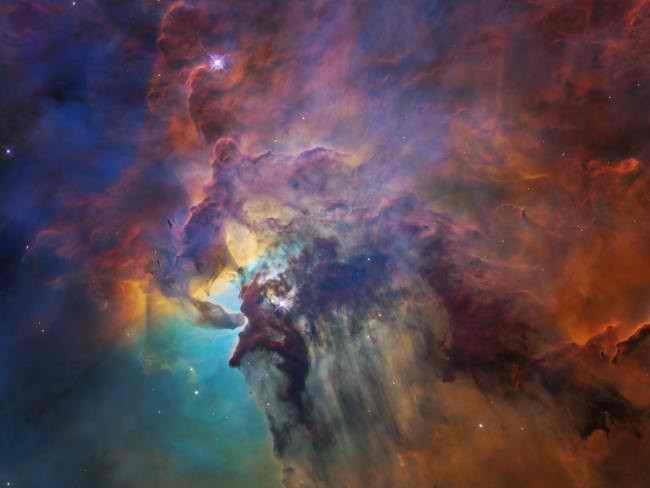
The Hubble Space Telescope is celebrating its 28th anniversary by taking stargazers on a visual exploratory treat to the Lagoon Nebula.
An Interstellar Experience
On Thursday, April 19, NASA set the Hubble Space Telescope onto the Lagoon Nebula. The celestial body is located 4,000 light-years away from Earth, while the Lagoon Nebula is 55 light-years wide and 20 light-years tall. Also, the Lagoon Nebula is three times the size of the moon, according to scientists.
While the Hubble Space Telescope only caught a section of the Lagoon Nebula, due to its massive size it was able to capture a significant event that was going on inside. A giant star, which NASA called Herschel 36, was exploding. The Hubble Space Telescope perfectly captured the star erupting and releasing radiation and winds inside the nebula.
Herschel 36 Statistics
Throughout the Hubble Space Telescope’s time capturing a part of the gigantic Lagoon Nebula, NASA scientists were hard at work identifying Herschel 36. The star is 32 times bigger than the sun. Herschel 36 also beats the sun with its temperature. However, scientists believe that the sun will outlive Herschel 36. Scientists have stated that the sun is 5 billion years old and has the power to continue to light the solar system for an additional 5 billion years. Due to Herschel 36’s size, the 1-million-year-old star would live for only 5 million years.
An Exclusive From NASA
Tech Times recently spoke with Jim Jeletic, the Hubble deputy project manager at NASA’s Goddard Space Flight Center, about the Hubble Space Telescope’s milestone celebration. Jeletic noted that thanks to the Hubble Space Telescope, NASA was able to learn more about scientific discoveries such as dark energy and was able to capture Comet Shoemaker-Levy 9 making an impact on Jupiter. Also, the Hubble Space Telescope led to the discovery of thousands of planets.
“From a science perspective, Hubble has changed our fundamental understanding of the universe. It has allowed us to refine our knowledge in some areas and discovered things that we never knew existed,” said Jeletic in an exclusive statement to Tech Times.
The Hubble Milestone
CNET reported that since the Hubble Space Telescope launched on April 24, 1990, the telescope has made over 1.5 million observations and captured images of more than 43,500 celestial objects. It has also made over 163,500 trips around Earth, which is the equivalent of 4 billion miles. Countless astronomers have cited Hubble data in over 15,000 research papers.
Hubble In The News
In addition to the Hubble Space Telescope celebrating its milestone anniversary, the space instrument also recently captured an ‘Einstein Ring,’ which showcased gravitational lensing. It was also able to obtain an image of a star called Icarus that is 9 billion light-years away from Earth. NASA also challenged stargazers to find ten new galaxies and two clusters that were added to the Messler Catalog.
